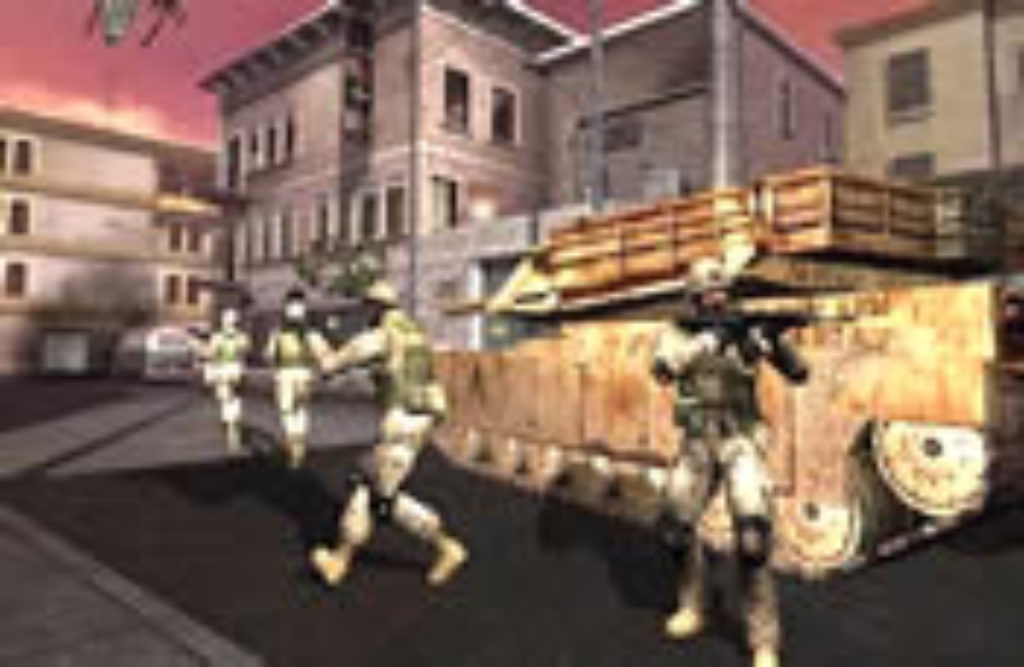
I carefully crept along the edge of the wall, my M-60 machine gun at the ready. The Marine across the street signaled that it was OK for me to round the corner of the building. Carefully, I peeked around the edge—and stepped right in front of an enemy ambush. I was toast.
Fortunately, the “enemy” in that instance were fellow Marines. We were training at Camp Pendleton’s “combat town,” the base’s simulated urban environment.
That encounter 30-some years ago came to mind as I began playing Close Combat: First to Fight, a first-person shooter video game that features Marines fighting in the streets of Beirut, Lebanon. It was a reminder of the sheer scariness of urban combat, where death awaits you around every corner and lurks behind every window and on every rooftop.
Rambo Not Welcome Here
I’m a bit surprised, but I am still happy to report that First to Fight actually tries to minimize the amount of killing players engage in. Based on a U.S. Marine Corps training model for urban warfare, with tactics much more advanced than what we had decades ago, this game encourages leadership, teamwork and restraint, not wholesale slaughter or indiscriminate firepower. (That doesn’t mean it’s not bloody. More on that later.)
The setting is Beirut in the near future, but anyone playing it is going to be thinking Iraq. (Indeed, 40 Marines fresh from Iraq helped the game’s designers create accurate tactics and conditions.) The basic premise: Lebanon has descended into chaos, with several armed factions vying for control, including Syrian-backed militias and a radical Islamic group called Atash, which is backed by Iranian special forces. NATO troops, including U.S. Marines, have been sent to restore peace.
You are the leader of the Marine Corps’ basic fighting unit: the four-man fire team. Together, you are a small, maneuverable unit with an impressive amount of firepower.
But you must deploy it properly.
That’s what makes First to Fight different from other popular first-person shooters. Repeatedly, you are told to attempt to capture, not kill, various faction leaders. And the game actually gives you the ability to command your assailants to drop their weapons and surrender. (Try that in Halo.)
If you run around shooting indiscriminately and pay no heed to the rest of your fire team, you’re in for a frustrating experience. For example, if you are careless and kill a civilian, you’re sent back to square one.
This forces you to think before you shoot. Each member of your team also has a “health” meter that measures not just physical well-being but also “morale and discipline.” If you’re a hotshot who ignores the needs of your fellow Marines, their “health” wanes to the point that your mission can be scrubbed.
Reinforcing the need for teamwork, one of the many tutorials throughout the game describes storming a room this way: “If you try to enter a room by yourself you’ll earn a fast ticket to the pearly gates.”
Just for grins, I tried it—several times. Hello pearly gates. When I deployed the fire team correctly, though, we successfully took the room.
Gunships, Mortars and Blood
It’s a tribute to the game’s realism and dedication to detail that it brought back so many memories of the shared hardships and camaraderie I experienced as a Marine grunt. The new tactics—new to me, at least—were a real eye-opener, too. I probably wouldn’t have stepped around that corner had we used today’s line of attack.
And for gamers who aren’t veterans, First to Fight provides insight into how today’s wars are really fought, which if nothing else creates something of a virtual antidote to the kill-anything-that-moves ethos ruling so many other games. But make no mistake. This is a war game, and even when played by the rules, you are responsible for a lot of killing.
Explosions onscreen propel bodies through the air. Hits are registered with a small spray of blood. And you still must line up your gun sight on other human beings.